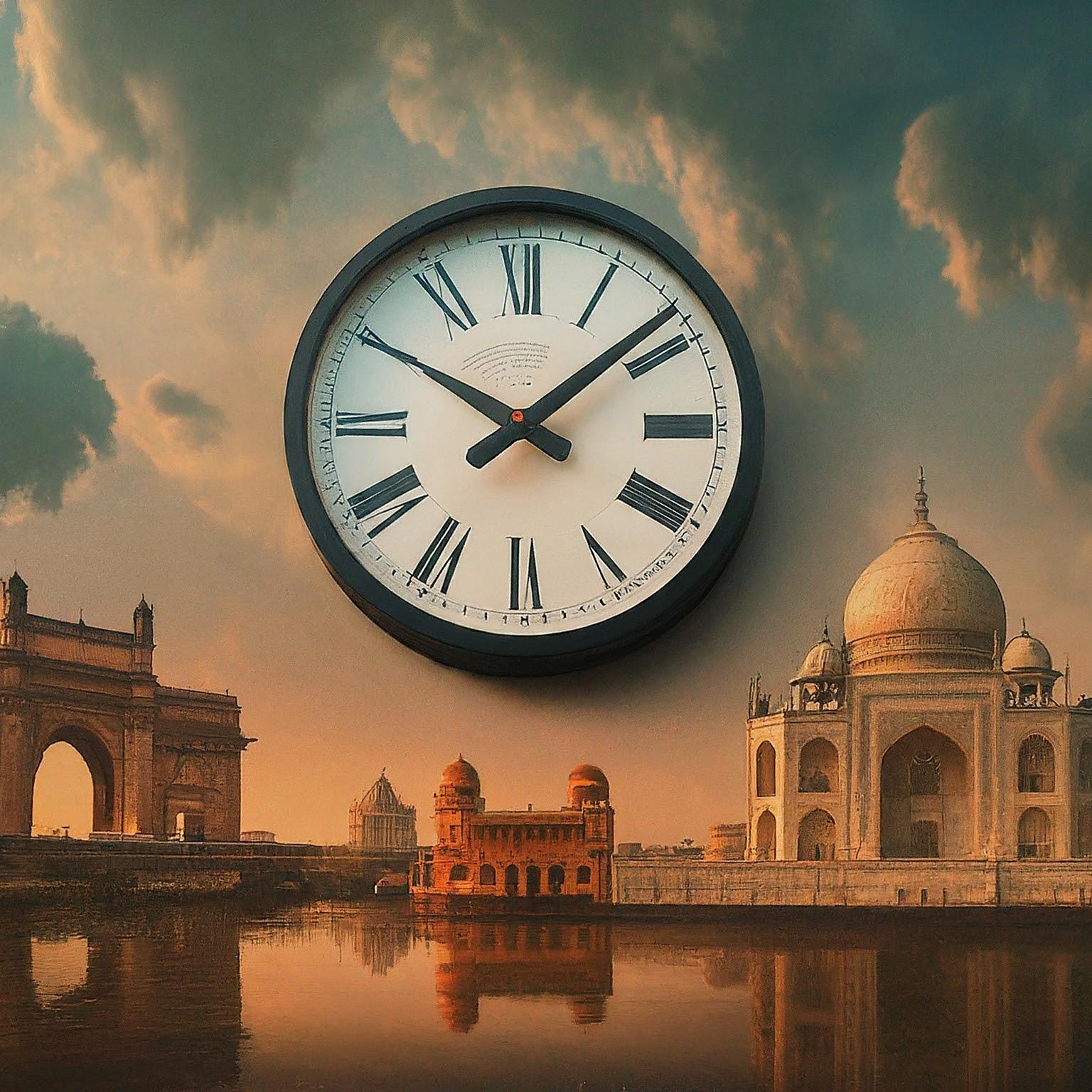Traveling to India is an adventure filled with vibrant cultures, stunning landscapes, and a unique sense of time. To make the most of your trip, understanding India’s time zone and its practical implications is key. Here’s a clear guide to Indian Standard Time (IST) and tips to navigate it as a traveler.
Indian Standard Time (IST)
India operates on a single time zone, Indian Standard Time (IST), across all its states and union territories. This simplifies planning, as you won’t need to adjust your watch when traveling from Delhi to Kerala or Mumbai to Kolkata. IST is set at UTC/GMT +5:30, meaning it’s 5 hours and 30 minutes ahead of Coordinated Universal Time (UTC) or Greenwich Mean Time (GMT).
Key Insight: India does not observe Daylight Saving Time (DST). This means the time difference with your home country remains consistent year-round, making it easier to coordinate calls or travel plans. For example:
- USA (Eastern Time): IST is 9.5 hours ahead (e.g., 12 PM IST = 2:30 AM EST).
- UK: IST is 5.5 hours ahead (e.g., 12 PM IST = 6:30 AM GMT).
- Australia (Sydney): IST is 4.5 hours behind (e.g., 12 PM IST = 4:30 PM AEST).
Geographical Nuances
India’s vast size—spanning over 3,000 km east to west—means the single time zone creates some quirks. In the northeastern states like Arunachal Pradesh or Assam, the sun rises and sets much earlier than in western states like Gujarat. For instance, in winter, the sun may rise in Guwahati around 5:30 AM but not until 6:30 AM in Mumbai. This can affect your travel plans, especially for early-morning activities like trekking in the Northeast or catching a sunrise at the Taj Mahal.
Traveler Tip: If you’re visiting the Northeast, plan outdoor activities like exploring Kaziranga National Park or attending the Hornbill Festival in Nagaland early in the day to make the most of daylight. In western or southern India, you’ll have more morning flexibility.
Cultural Approach to Time
In India, the concept of “IST” is sometimes jokingly referred to as “Indian Stretchable Time” in social or casual settings. Punctuality can be more relaxed outside formal contexts, especially in rural areas or for social gatherings. A meeting set for 6 PM might start closer to 6:30 PM, and a dinner invite could have a buffer of up to an hour. This reflects India’s vibrant, go-with-the-flow culture, but it can catch travelers off guard.
Traveler Tip: Embrace this flexibility in casual scenarios, like meeting locals for chai or attending a village festival. However, always clarify expectations for events like guided tours or homestay arrangements, as some hosts may stick to stricter schedules.
Punctuality for Public Services
While social settings may be relaxed, public transportation and official services in India run on tight schedules. Trains, buses, and domestic flights—operated by providers like Indian Railways, Vistara, or state bus corporations—stick closely to their timetables. Missing a train by even a few minutes can disrupt your plans, especially in a country where connections may not run frequently in remote areas.
Traveler Tip: Always arrive at least 30-45 minutes early for trains, buses, or flights. For major hubs like Delhi’s New Delhi Railway Station or Mumbai’s Chhatrapati Shivaji Maharaj Terminus, factor in an extra hour to navigate crowds, security checks, and ticket counters. Download apps like IRCTC Rail Connect or Ixigo to track train statuses in real-time.
Additional Tips for Travelers
- Sync Your Devices: Most smartphones automatically adjust to IST when you connect to a local network. Double-check your phone’s time zone settings to avoid confusion, especially for time-sensitive plans like catching a flight or booking a tour.
- Plan Around Traffic: In almost all major cities, traffic can be unpredictable. If you’re heading to an airport or a key attraction like the Gateway of India, leave early to account for delays, especially during peak hours (8-10 AM, 5-8 PM).
- Leverage IST for Multi-City Itineraries: Since IST is uniform, planning multi-city trips (e.g., Delhi to Jaipur to Agra) is straightforward. Use this to your advantage when booking intercity buses or trains via platforms like RedBus or MakeMyTrip.
- Respect Local Schedules: In tourist-heavy areas like Rajasthan or Goa, businesses like restaurants or shops may open later (around 10 AM) and stay open late (10 PM or later). In contrast, in smaller towns or religious sites like Varanasi, early mornings are busy with rituals and markets.
- Jet Lag Planning: The 5.5-hour time difference can cause mild jet lag, especially if you’re traveling from Europe or the Americas. Arrive a day early for important events like a wedding or business meeting to acclimate.
Why This Matters for Your Trip
Understanding IST and its nuances helps you plan a smoother, more enjoyable trip. Whether you’re catching a train to the Himalayas, attending a festival in Rajasthan, or exploring street food in Kolkata, aligning with India’s time culture ensures you don’t miss out. By factoring in buffers for public transport and embracing the relaxed vibe of social settings, you’ll navigate India like a seasoned traveler.
Fun Fact: The Indian Institute of Astrophysics in Bengaluru maintains the country’s time standard, ensuring IST stays precise. So, when you’re marveling at the stars in Ladakh or enjoying a sunset on a Kerala beach, you’re on the same clock as the rest of India!
Categories :


